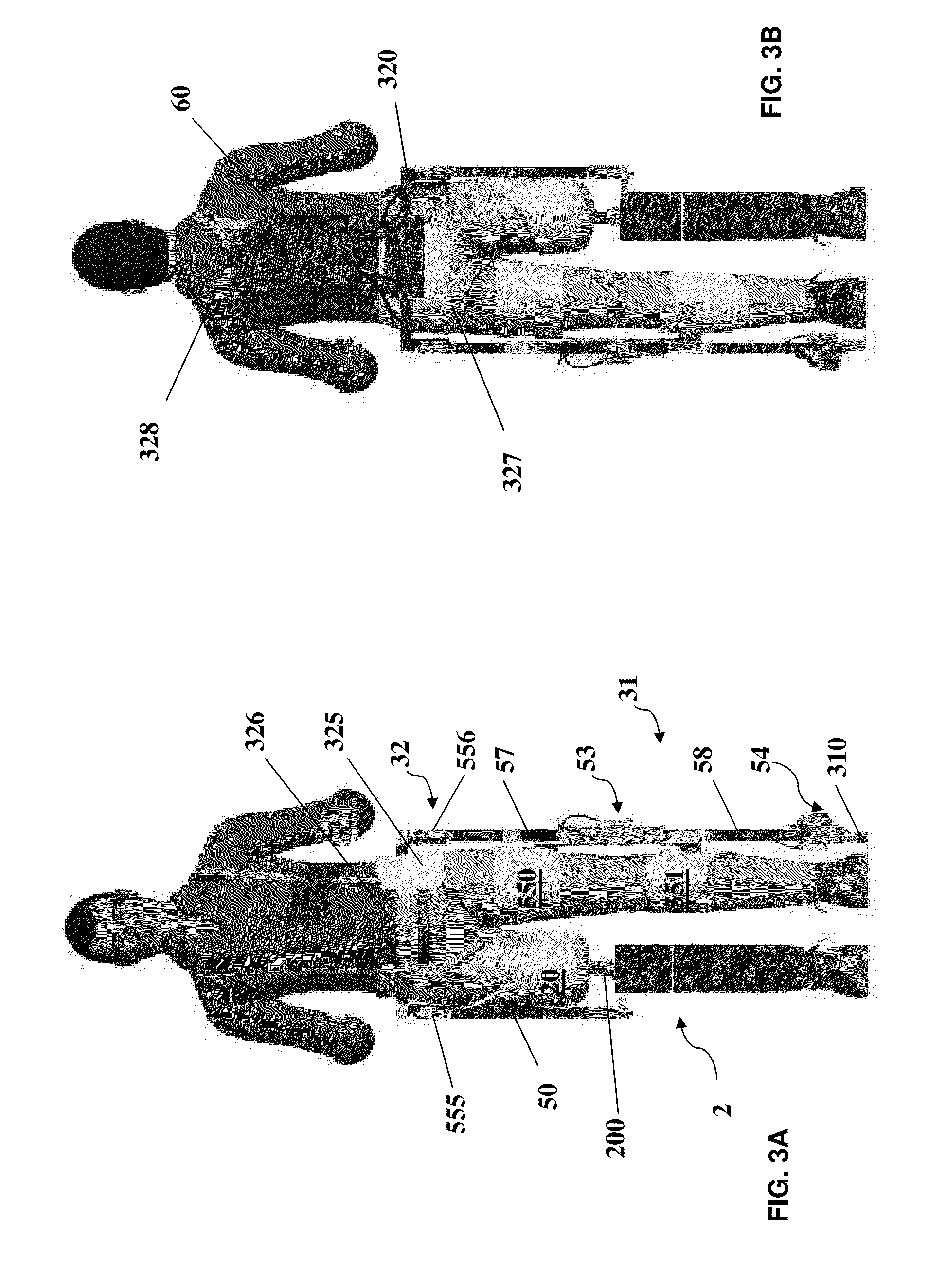Technological aid for transfemoral amputees
a technology for amputees and wheelchairs, applied in the field of wheelchairs for wheelchair users, can solve the problems of less stable locomotion, affecting the daily life of amputees, and transfemoral amputation is a big challenge for the amputee, so as to reduce the energetic and cognitive load, the effect of increasing the efficiency of the ampu
- Summary
- Abstract
- Description
- Claims
- Application Information
AI Technical Summary
Benefits of technology
Problems solved by technology
Method used
Image
Examples
Embodiment Construction
[0040]With reference initially to FIG. 1, it is shown an aid device 1 for the motor disabled according to a preferred embodiment of the invention which applies to transfemoral amputees.
[0041]Device 1 is conceived as an artificial cognitive system for the lower-limb functional replacement and assistance in daily living activities in transfemoral amputees.
[0042]Device 1 comprises a lower-limb prosthesis 2 for the amputated limb and an orthosis 3, the latter comprising a limb orthotic module 31 apt to be worn at the contralateral (sound) lower-limb and a pelvis module 32. Pelvis module 32 mechanically connects prosthesis 2 and limb orthotic module 31.
[0043]In the present example, both prosthesis 2 and limb orthotic module 31 have respective flexion / extension degrees of freedom at an ankle and at a knee portion thereof. The elements allowing such degrees of freedom are represented schematically in FIG. 1 and denoted by 51 and 52 for prosthesis's knee and ankle, respectively, and by 53 a...
PUM
 Login to View More
Login to View More Abstract
Description
Claims
Application Information
 Login to View More
Login to View More - R&D
- Intellectual Property
- Life Sciences
- Materials
- Tech Scout
- Unparalleled Data Quality
- Higher Quality Content
- 60% Fewer Hallucinations
Browse by: Latest US Patents, China's latest patents, Technical Efficacy Thesaurus, Application Domain, Technology Topic, Popular Technical Reports.
© 2025 PatSnap. All rights reserved.Legal|Privacy policy|Modern Slavery Act Transparency Statement|Sitemap|About US| Contact US: help@patsnap.com



